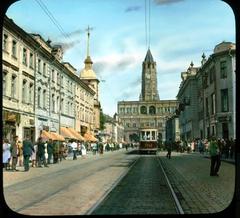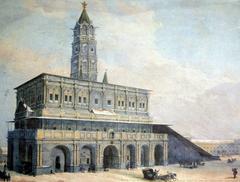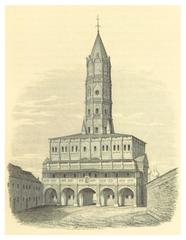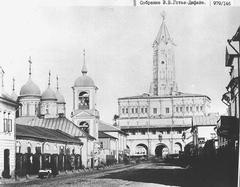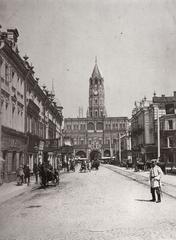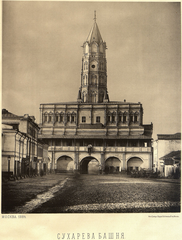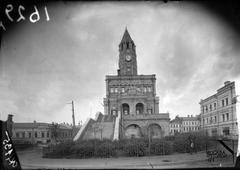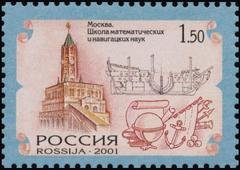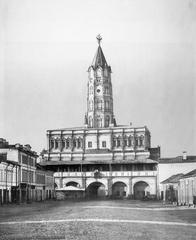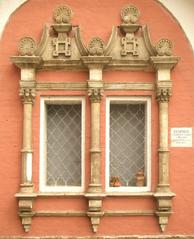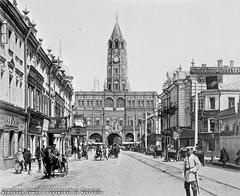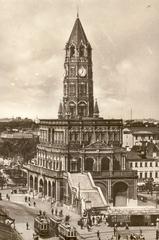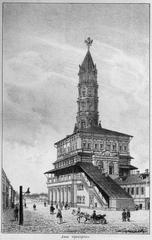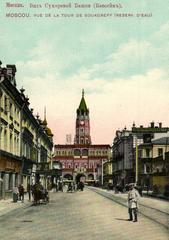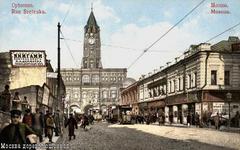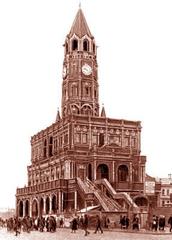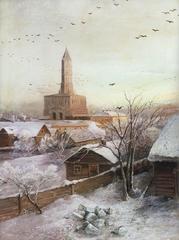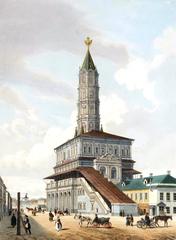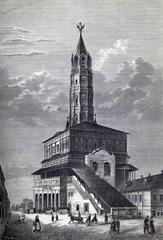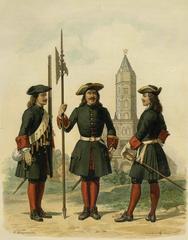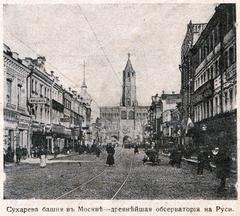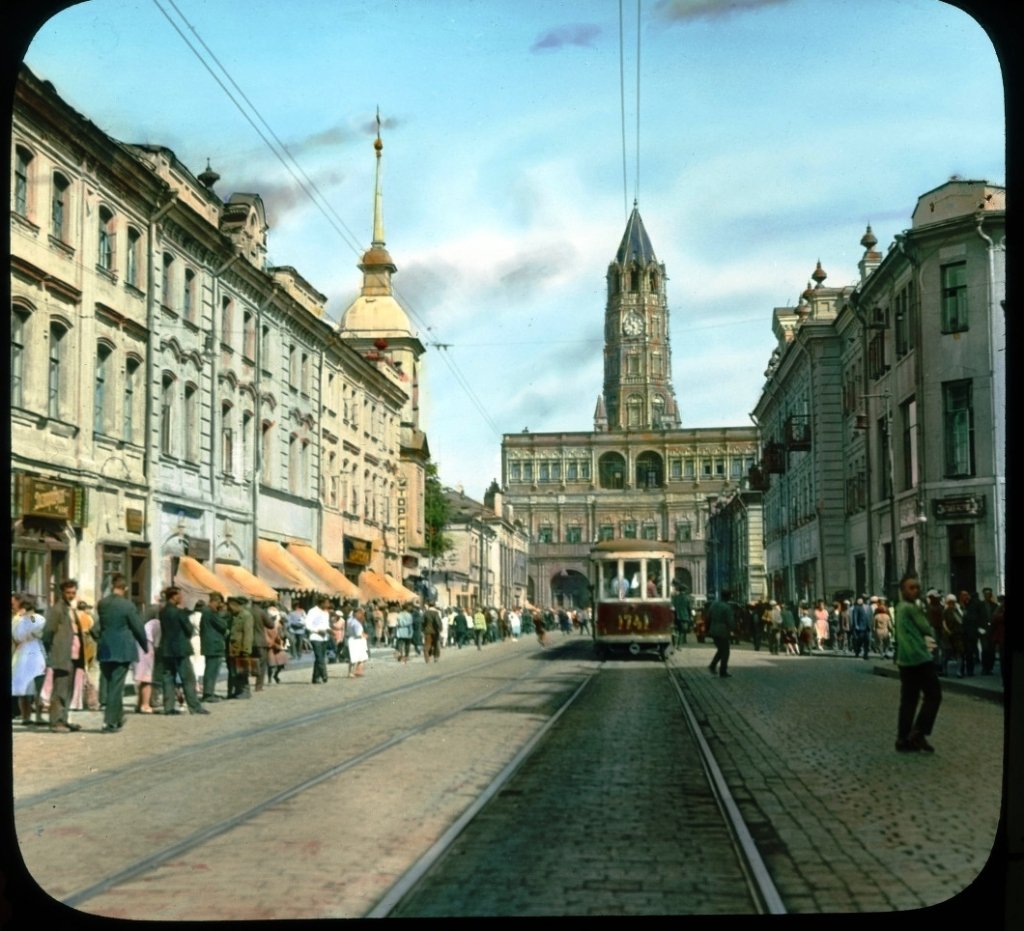
Sukharev Tower Visiting Hours, Tickets, and Guide to Moscow Historical Sites
Date: 14/06/2025
Introduction
The Sukharev Tower, once a prominent landmark in Moscow, represents a compelling chapter in the city’s architectural, scientific, and cultural history. Although demolished in 1934, its enduring legacy continues to shape Moscow’s identity, inviting visitors to explore its story through museum exhibits, digital reconstructions, and the vibrant urban landscape at its former site. This comprehensive guide details the tower’s history, cultural significance, myths, and practical information for those wishing to discover its legacy and related attractions in Moscow.
For further background and resources, see Wikipedia, Museum Studies Abroad, and Bridge to Moscow.
Table of Contents
- Introduction
- Historical Overview
- Visiting the Sukharev Tower Site Today
- Myths, Legends, and Cultural Impact
- Surviving Artifacts and Exhibitions
- Sukharev Tower: Demolition and Modern Commemoration
- Visitor Information and Tips
- Frequently Asked Questions (FAQ)
- Visuals and Media Recommendations
- Conclusion and Call to Action
- References and Further Reading
Historical Overview
Origins and Construction
The Sukharev Tower was commissioned by Tsar Peter I (Peter the Great) between 1692 and 1701, standing at the intersection of the present-day Garden Ring and Sretenka Street (Wikipedia; Wikiwand). Designed in the Moscow Baroque style, it featured red brick construction, white stone details, and was crowned with four turrets. The architect is most often cited as Mikhail Ivanovich Choglokov, though some folklore credits Peter I or his associate Franz Lefort (tourirana.ru). At over 60 meters tall, it was one of Moscow’s tallest and most striking structures (vogueindustry.com).
Purpose and Symbolism
The tower was not a fortress but a ceremonial gateway commemorating Peter I’s victory over his half-sister Sofia during the Streltsy uprising of 1689, and it was named for Colonel Lavrenty Sukharev, who supported the Tsar (hum54-15.omeka.fas.harvard.edu). Adorned with the imperial double-headed eagle and an unusual clock, the Sukharev Tower quickly became a powerful symbol of the city’s modernization.
Functions Through the Centuries
Science and Education
The tower housed Russia’s first School of Mathematics and Navigation, established by Peter the Great, as well as an astronomical observatory led by Jacob Bruce (Wikipedia). Its role as an educational and scientific hub marked a significant milestone in Russian modernization.
Market and Commercial Life
By the 19th century, the area around the tower was home to the bustling Sukharevka market, famed for its lively atmosphere, eclectic goods, and as a gathering place for Muscovites of all backgrounds (Wikiwand). Writers like Vladimir Gilyarovsky immortalized this vibrant scene in literature (gallerix.org).
Civic Uses
In the early 20th century, the tower was adapted for various civic uses, including as a waterworks and, later, the Moscow Communal Museum, the precursor to the Museum of Moscow (vogueindustry.com).
Demolition and Legacy
The Sukharev Tower was demolished in 1934 during Stalin’s urban reconstruction campaign to make way for the expansion of the Garden Ring (museumstudiesabroad.org). This act sparked significant public and professional protest but ultimately reflected the era’s drive to modernize the capital at the expense of heritage (simple.wikipedia.org). Today, the tower’s memory is preserved in literature, art, and the names of nearby metro stations and squares.
Visiting the Sukharev Tower Site Today
Location and Accessibility
The original site is now a busy intersection at the junction of Prospekt Mira, Sretenka Street, and the Garden Ring, accessible via the Sukharevskaya and Prospekt Mira metro stations (Bridge to Moscow). Although no physical remnants remain, visitors can explore the area and imagine the tower’s former grandeur.
Nearby Attractions
- Museum of Moscow: Offers exhibits on the city’s architectural and urban history, including the Sukharev Tower.
- Shchusev Museum of Architecture: Features models and archives of lost Moscow landmarks.
- Sretenka Street: Renowned for its vibrant urban life and historical ambiance.
- Prospekt Mira District: Showcases a blend of historic and contemporary architecture.
Visiting Hours and Tickets
- Sukharev Tower Site: Open to the public at all times; there are no tickets or restricted hours.
- Museum of Moscow: Typically open Tuesday–Sunday, 10:00–18:00. Check the official website for current details and ticket prices.
- Shchusev Museum of Architecture: See the museum’s website for visiting hours and ticketing information.
Guided Tours and Events
Guided walking tours of Moscow’s lost landmarks often include the Sukharev Tower site. These tours can be booked in advance, and some are free or included with museum admission (Russia.ru).
Myths, Legends, and Cultural Impact
The Sukharev Tower is the subject of numerous legends, including tales of secret societies, Masonic symbols, and the alchemical experiments of Jacob Bruce (vogueindustry.com). Its architectural distinctiveness and scientific past inspired stories that have become part of Moscow’s folklore. The tower is referenced by major Russian writers and poets, underscoring its symbolic role in the city’s literary and artistic traditions.
Surviving Artifacts and Exhibitions
While the tower itself is gone, several artifacts survive. Balusters and capitals are displayed at the Gilyarovsky Center’s “The Myth of the Sukharev Tower” exhibit (gallerix.org). Detailed models can be seen at the National Centre RUSSIA’s “Birth of Scale” exposition (Russia.ru), and the Shchusev Museum of Architecture houses archives and reconstructions related to Moscow’s lost heritage.
Sukharev Tower: Demolition and Modern Commemoration
Urban Planning Context
The Soviet government’s modernization drive in the 1930s led to the tower’s demolition as part of the Garden Ring expansion (museumstudiesabroad.org). This reflected a broader pattern of erasing the old cityscape to make way for new infrastructure.
Public Response
The demolition was met with outcry from architects, historians, and the public, who lamented the loss of a unique example of Moscow Baroque architecture. Despite protests, the tower was dismantled stone by stone, and the square was reconfigured for traffic (simple.wikipedia.org).
Legacy and Visitor Experience
Today, commemorative markers and museum exhibits preserve the tower’s memory. Digital reconstructions and virtual tours help visitors visualize the original structure. The Sukharevskaya metro station and square retain the tower’s name as a nod to its historical importance.
Visitor Information and Tips
- Location: Intersection of Prospekt Mira, Sretenka Street, and Garden Ring.
- Nearest Metro: Sukharevskaya (Line 6), Prospekt Mira (Line 5/6).
- Museums: Museum of Moscow, Shchusev Museum of Architecture, and the National Centre RUSSIA.
- Best Time to Visit: Early mornings or evenings to avoid heavy traffic.
- Accessibility: Public sites and museums are generally accessible; check each institution’s website for details.
Frequently Asked Questions (FAQ)
Q: Can I visit the original Sukharev Tower?
A: The tower was demolished in 1934, but its site and related museum exhibits are accessible to visitors.
Q: Are there any remnants or artifacts to see?
A: Artifacts are displayed at the Gilyarovsky Center and Museum of Moscow; detailed models can be viewed at the National Centre RUSSIA.
Q: How do I book a guided tour?
A: Tours can be booked through local museums or tourism websites. Some require advance registration (Russia.ru).
Q: Are there plans to rebuild the Sukharev Tower?
A: Although proposals have surfaced, no reconstruction has been approved as of June 2025.
Q: What other attractions are nearby?
A: Sretenka Street, Prospekt Mira, Museum of Moscow, and the Kremlin’s Ivan the Great Bell Tower.
Visuals and Media Recommendations
- Model of Sukharev Tower at National Centre RUSSIA (alt=“Sukharev Tower model at National Centre RUSSIA”)
- Map showing original site (alt=“Map of Sukharev Tower original location in Moscow”)
- Shchusev Museum of Architecture exterior (alt=“Shchusev Museum of Architecture building in Moscow”)
- Historical photographs and digital reconstructions are available at museum exhibits and online.
Conclusion and Call to Action
Although the Sukharev Tower no longer graces the Moscow skyline, its influence endures in the city’s cultural memory, museums, and the urban landscape. Exploring its story offers insight into Moscow’s transformation and the ongoing dialogue between modernization and heritage preservation. To make the most of your visit, explore the site, visit local museums, join guided tours, and engage with virtual reconstructions.
Stay informed about events and tours via local museum websites and tourism platforms. For curated audio guides and more historical content, download the Audiala app and follow our social media channels.
References and Further Reading
- Visiting Sukharev Tower: History, Tickets, and Moscow’s Historical Sites, 2025, Tourirana.ru
- Comprehensive Overview of Sukharev Tower, 2025, Wikipedia
- Cultural and Social Significance of Sukharev Tower, 2025, RBTH
- Sukharev Tower History and Demolition, 2025, Museum Studies Abroad
- Sukharev Tower Visiting Hours and Tickets, 2025, Bridge to Moscow
- Sukharev Tower Legends and Cultural Impact, 2025, Vogue Industry
- Sukharev Tower Artifacts and Exhibitions, 2025, Gallerix
- National Centre RUSSIA “Birth of Scale” Exposition, 2025, Russia.ru
